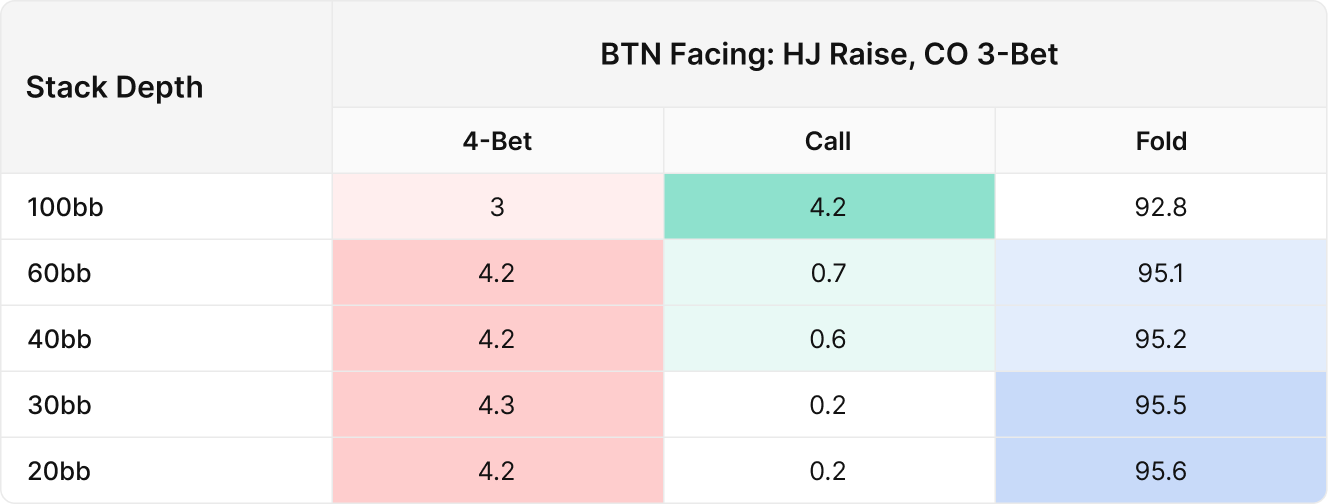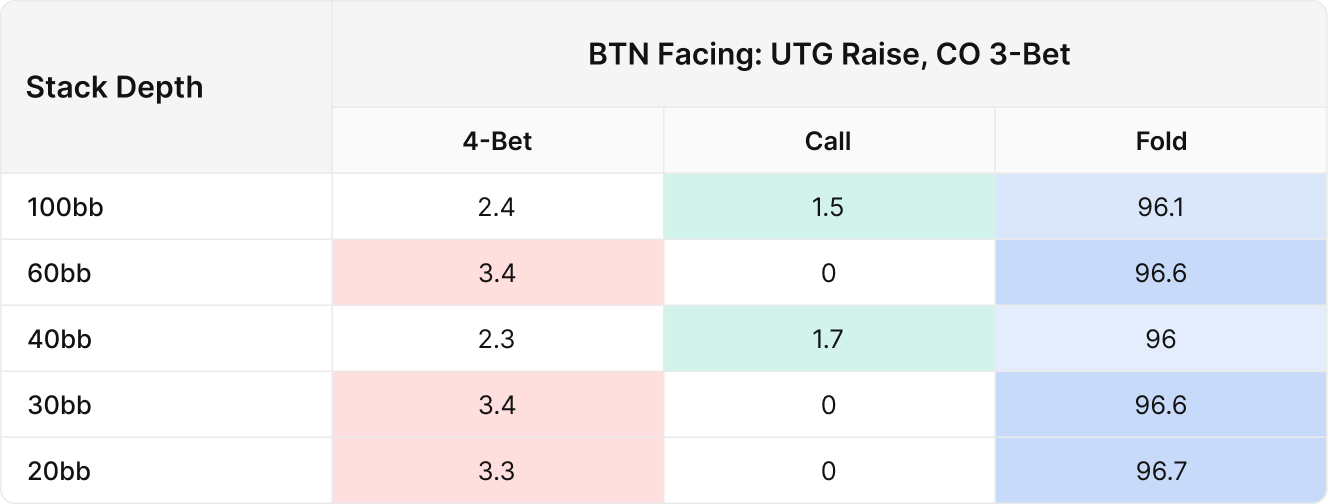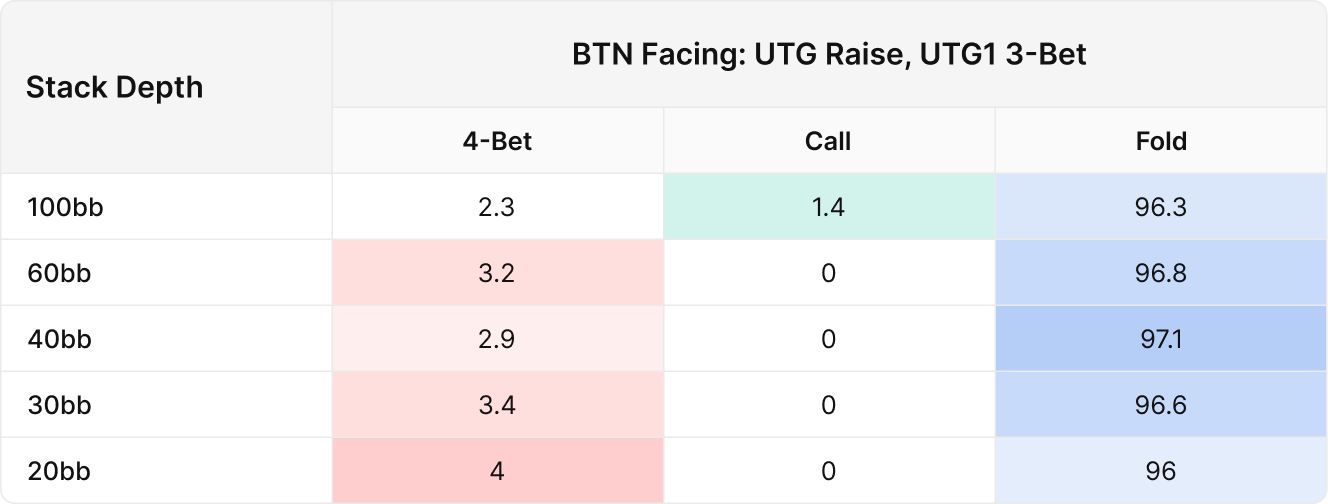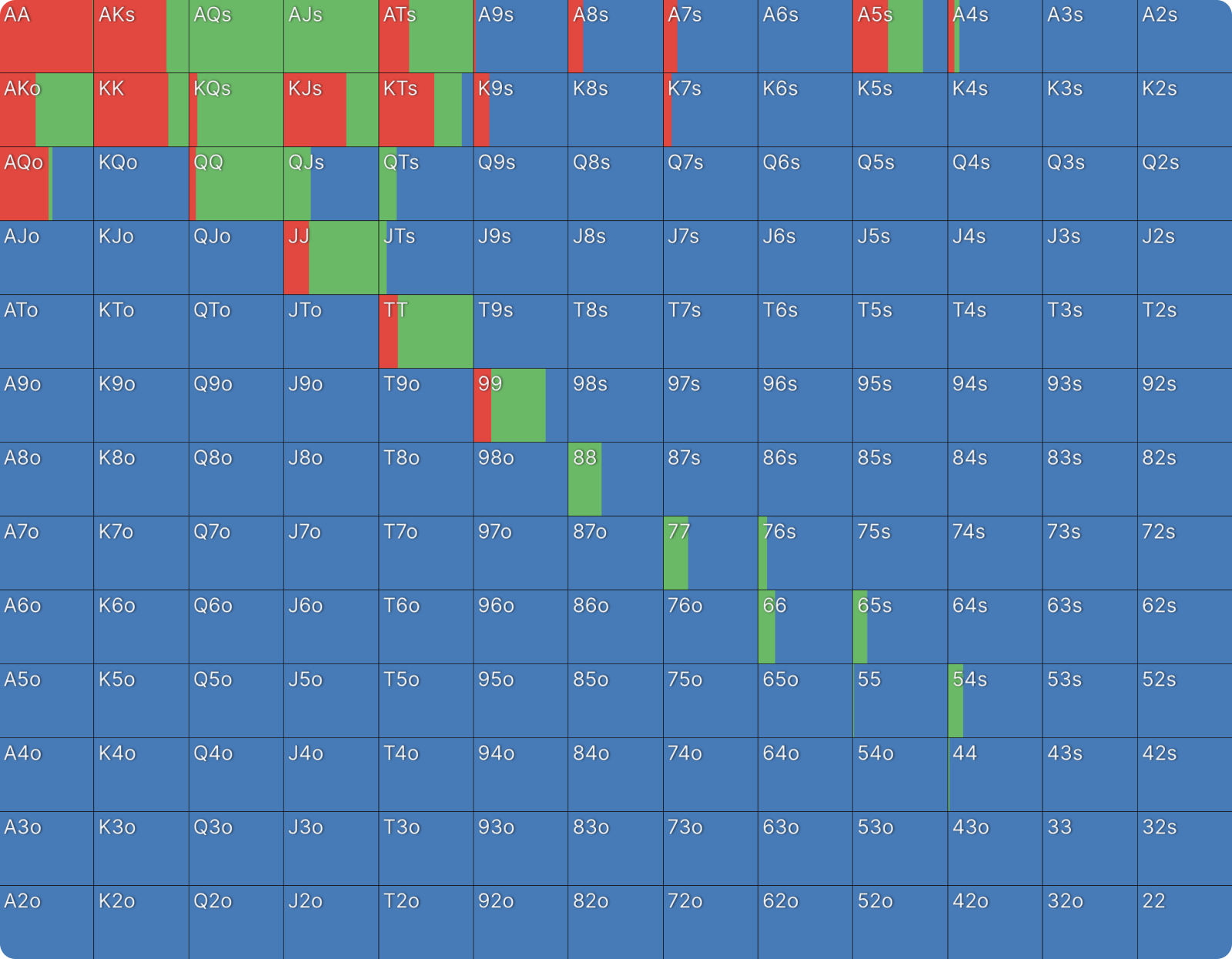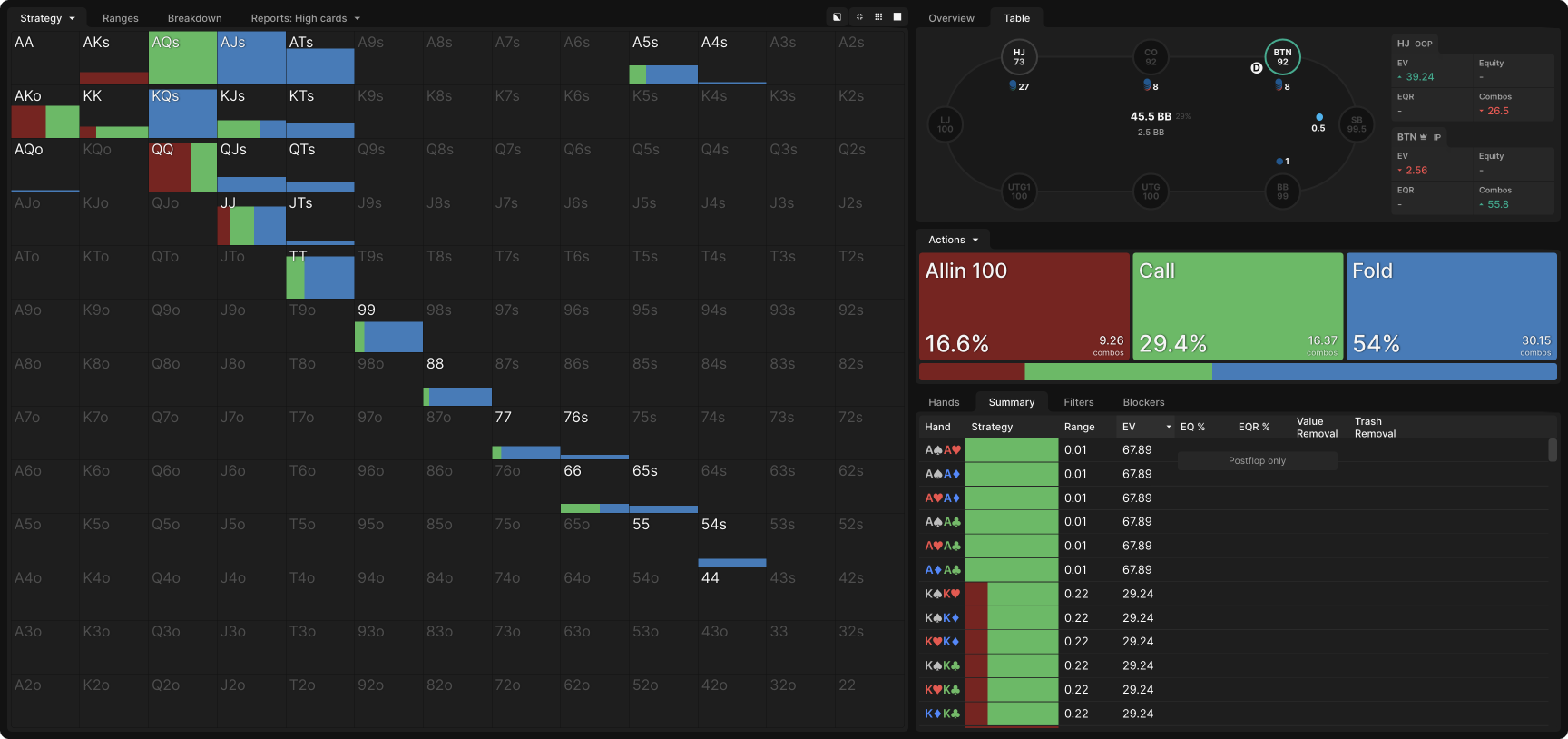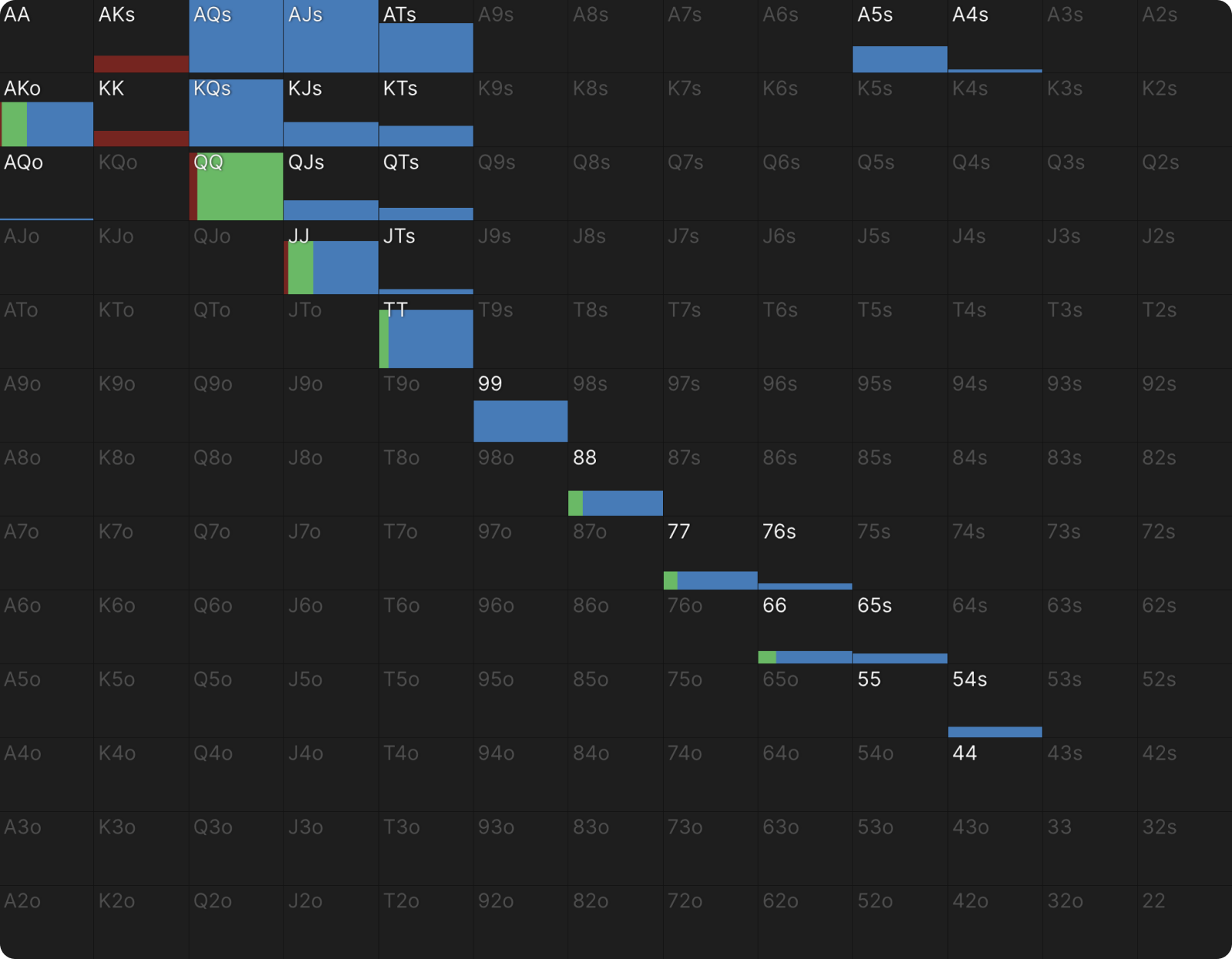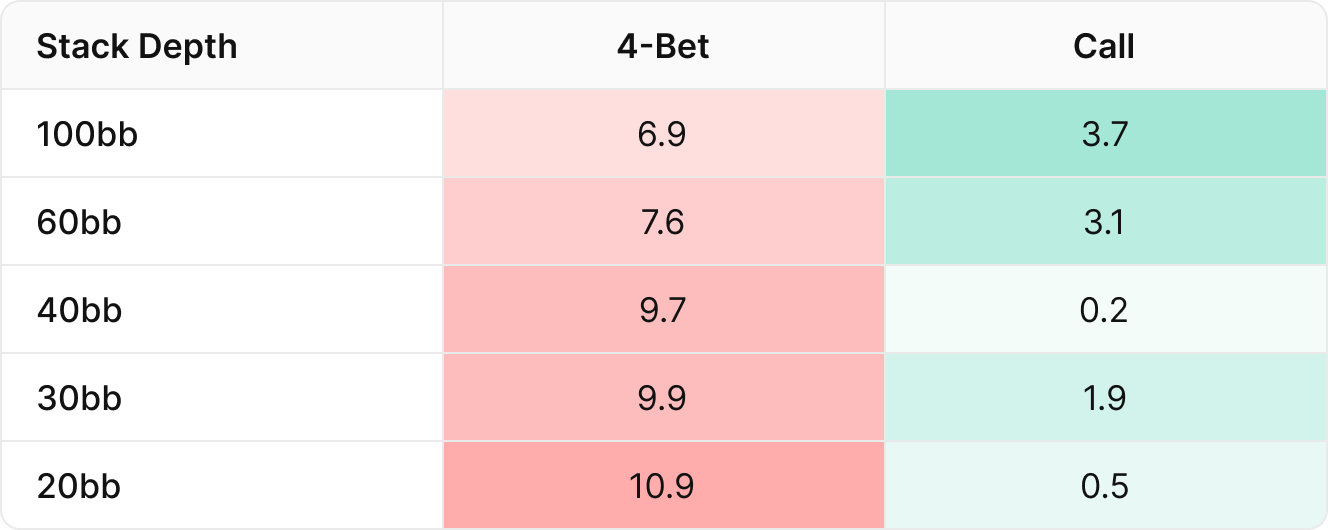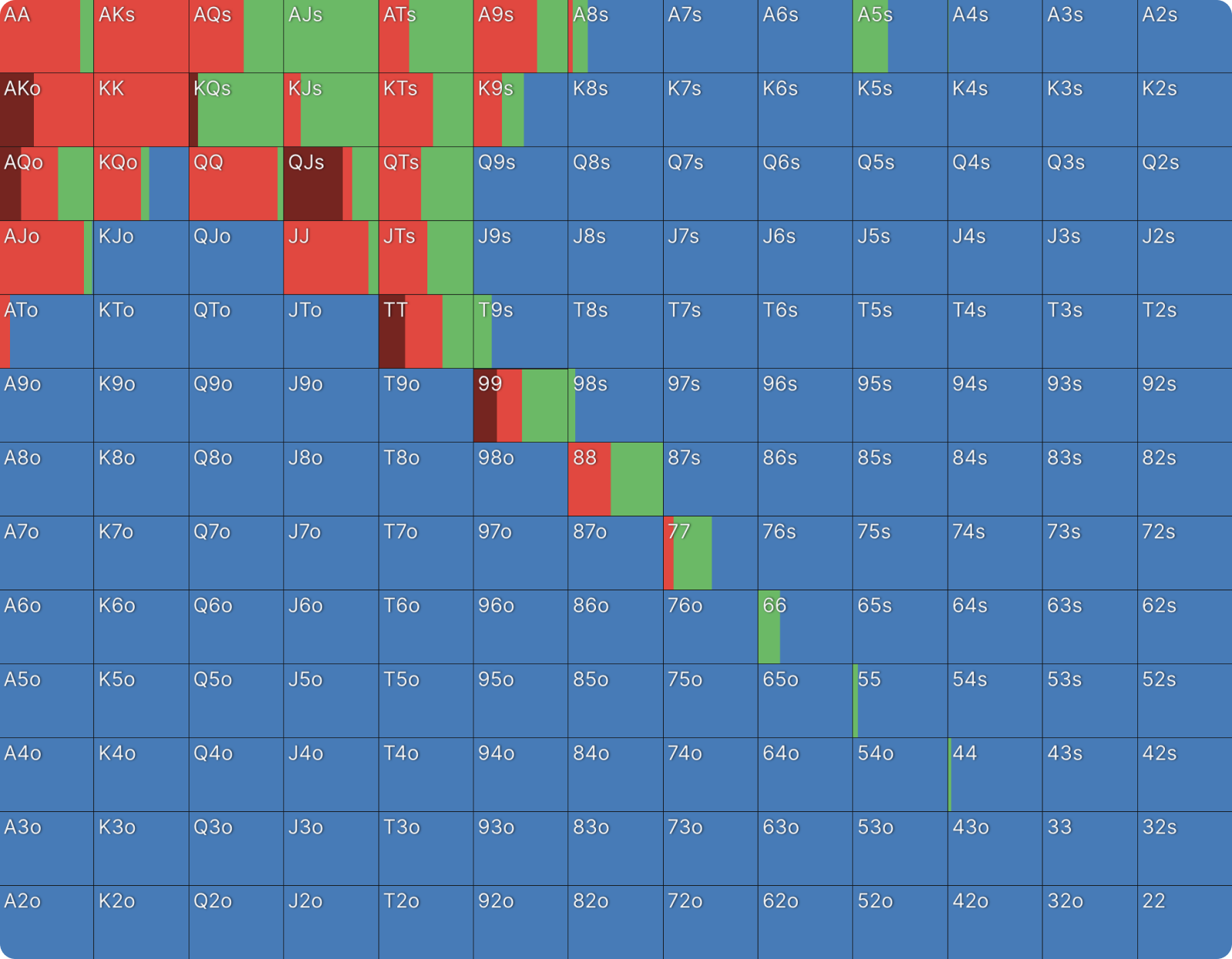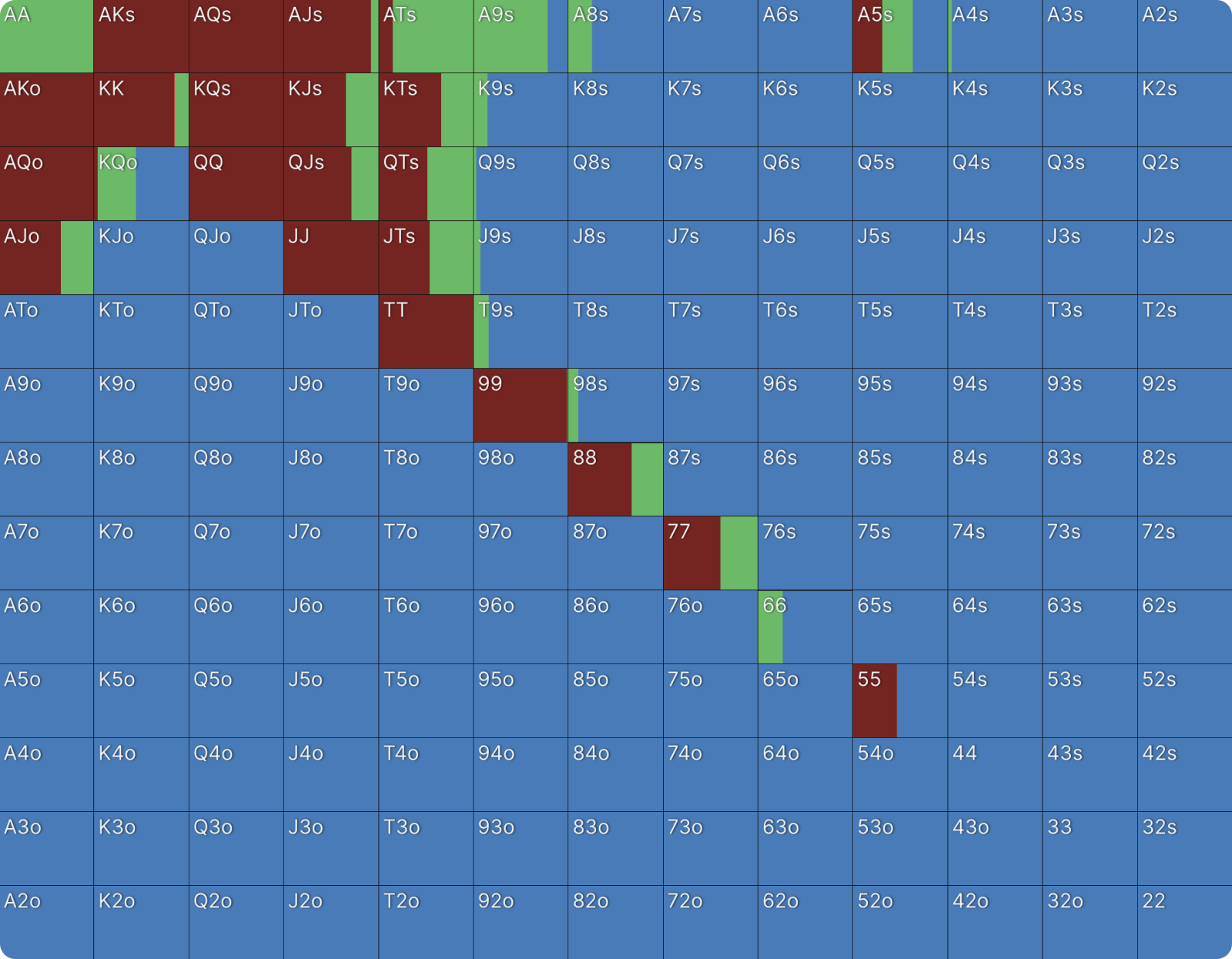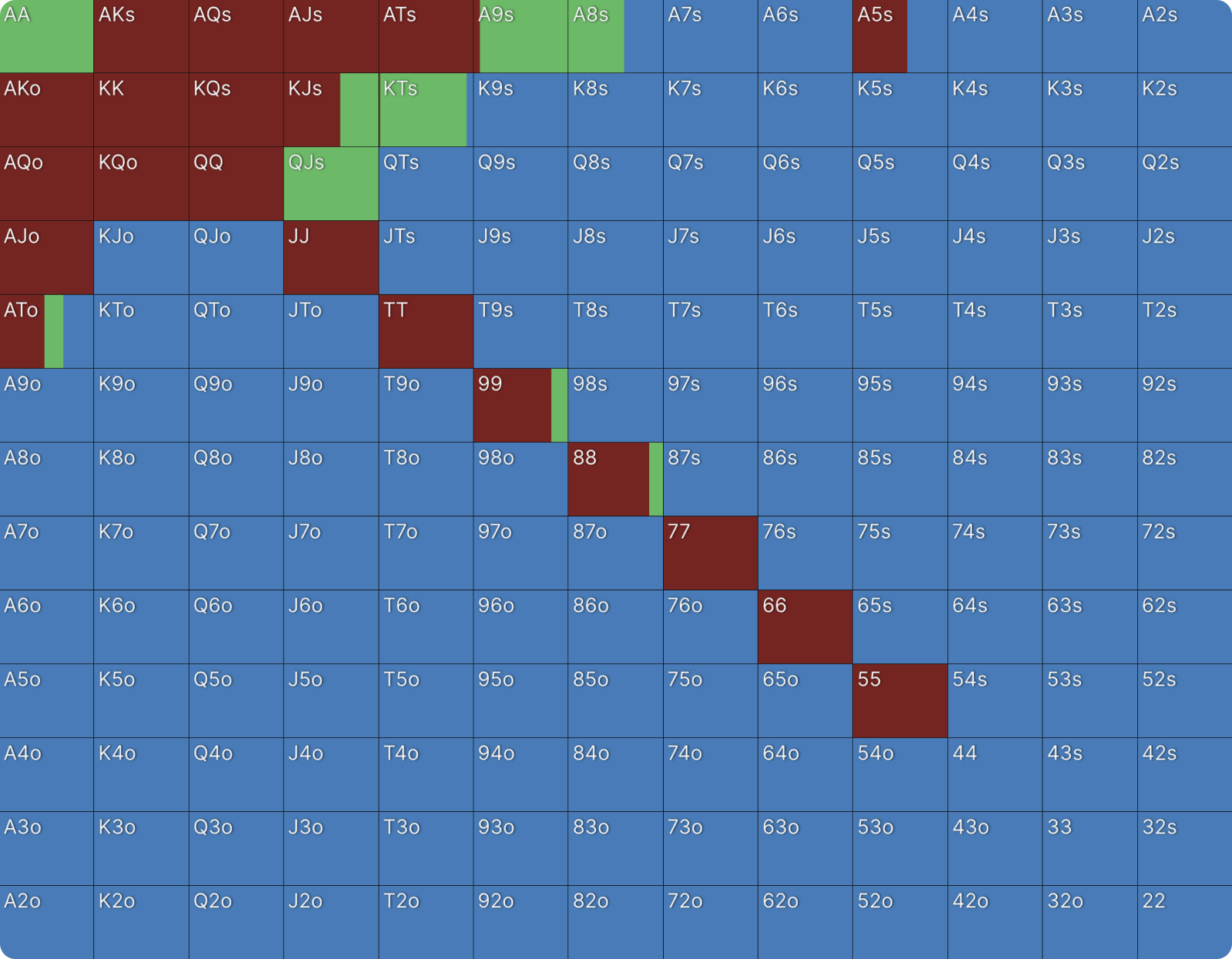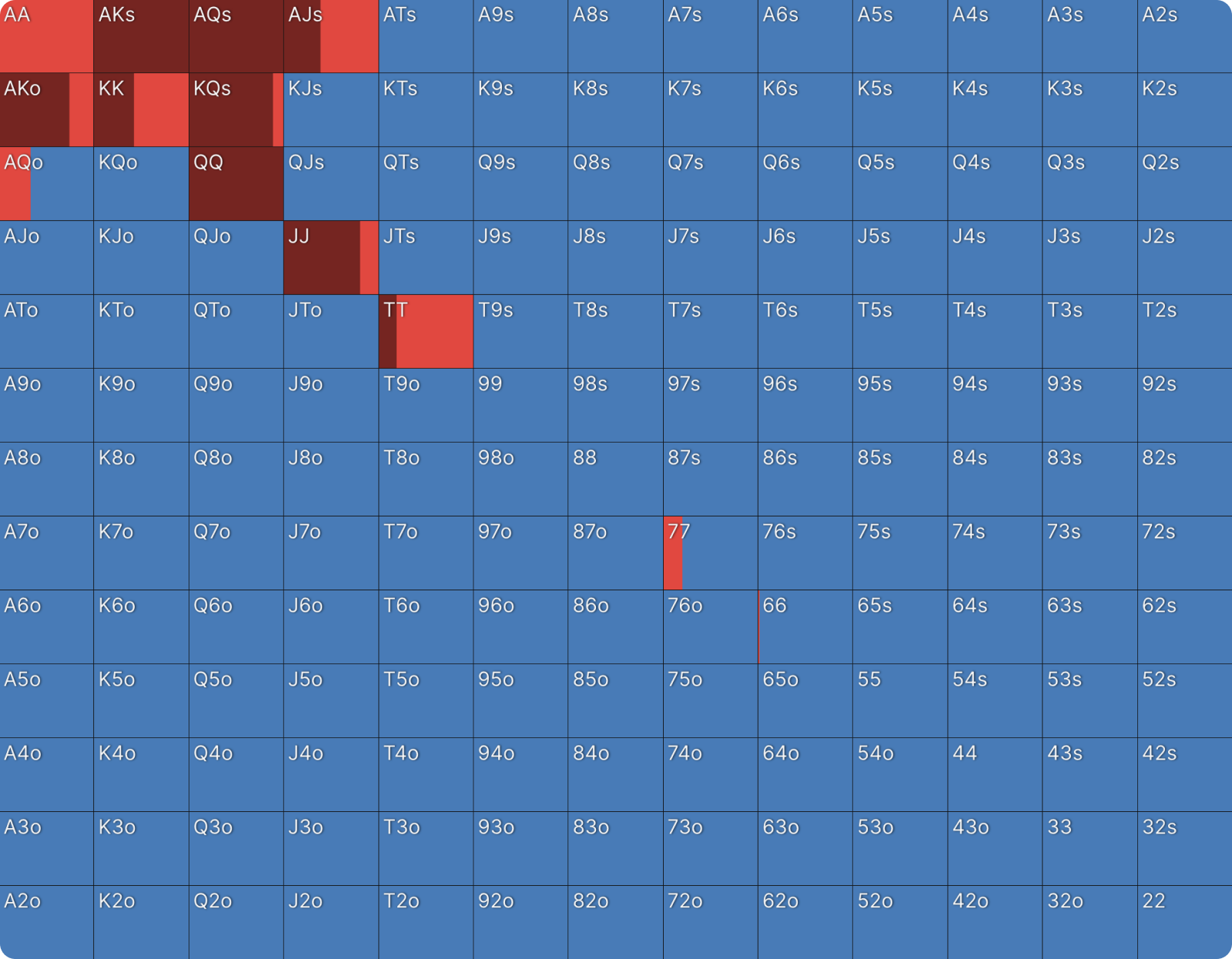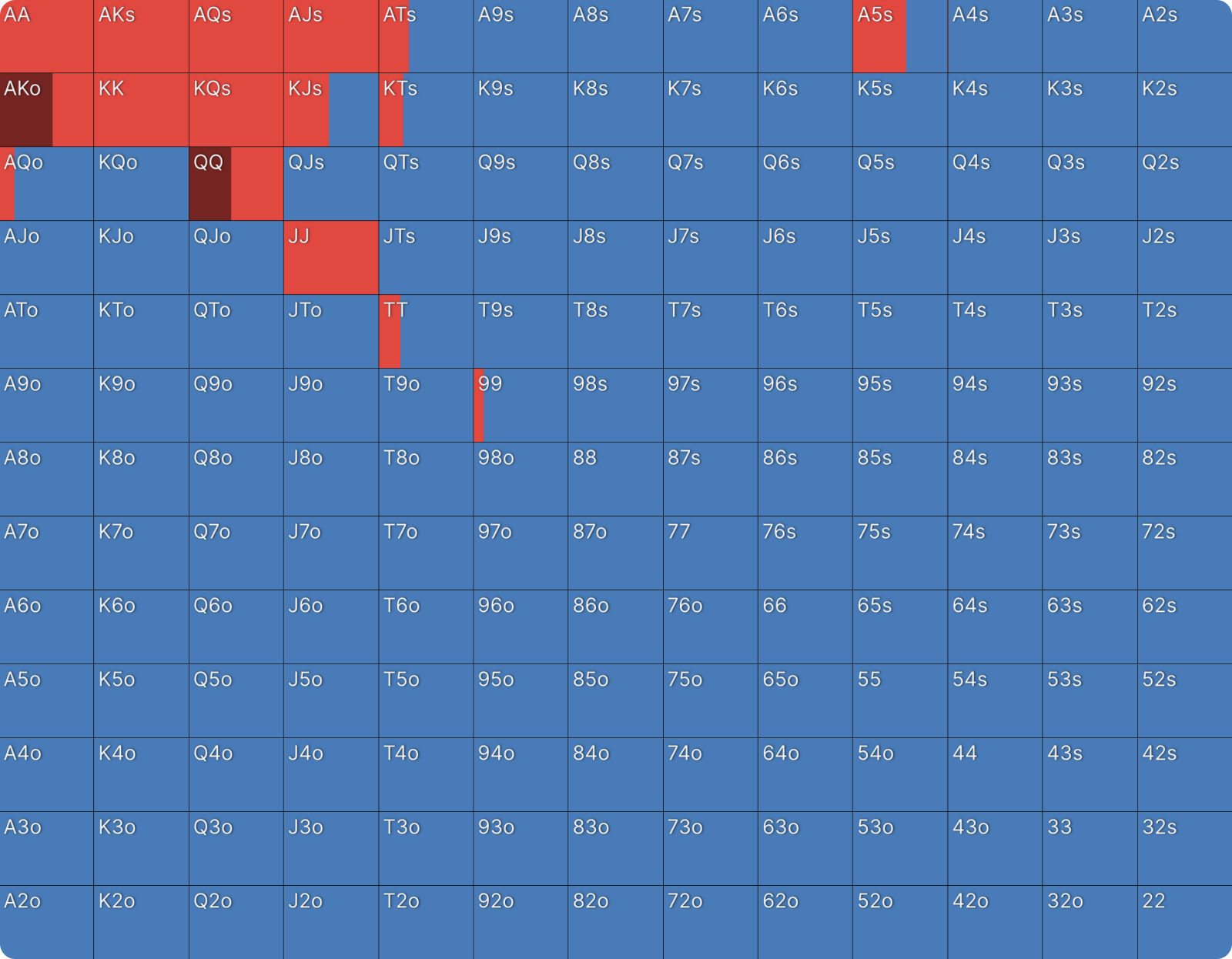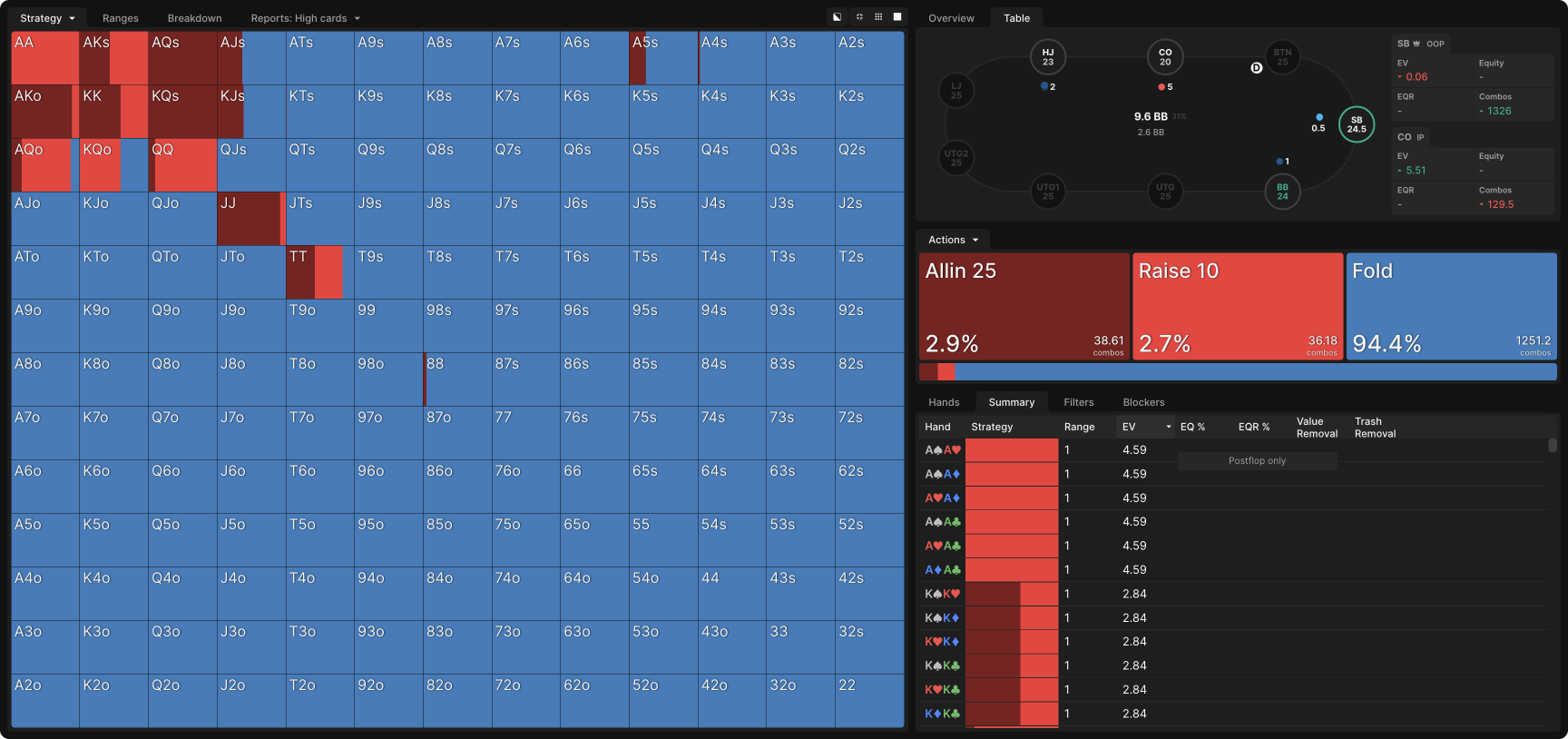Should You Ever Cold Call a 3-Bet?
When there’s been a raise and re-raise before the action is on you, you will have to play extremely tight. This is true regardless of your position, the positions of the other players, or the effective stack depth. Most people get that part right.
The tricky part is what to do when you do not fold. Just how strong a hand do you need to four-bet? Should you ever bluff? Should you ever call? If you do four-bet, how large should it be?
In this article, we will answer those questions and more.

When there’s been a raise and re-raise before the action is on you, you will have to play extremely tight. This is true regardless of your position, the positions of the other players, or the effective stack depth. Most people get that part right.
The tricky part is what to do when you do not fold. Just how strong a hand do you need to four-bet? Should you ever bluff? Should you ever call? If you do four-bet, how large should it be?
In this article, we will answer those questions and more.
Cold Calling From the BTN
If you were not the original raiser, then with very few exceptions, you should not be calling three-bets.
If your hand isn’t strong enough to four-bet, it isn’t strong enough to contest the pot at all.
One exception is when you are deep-stacked and on the BTN, but even then, it’s a rarity. In almost all cases, if your hand isn’t strong enough to four-bet, it isn’t strong enough to contest the pot at all.
The following chart shows the BTN’s equilibrium frequencies in response to a raise and three-bet from various positions, at various stack depths:
Under the best of circumstances, the BTN folds more than 90% of hands. Under the worst, they fold just under 97%.
Calling features prominently in these strategies only with very deep stacks. This is when position is most valuable, and as a result, BTN VPIPsVPIP
An online poker acronym which stands for ‘voluntary put in pot’, a statistic that measures the frequency with which a player voluntarily puts money into the pot pre-flop. slightly more hands than at shallower stack depths. They can afford to take a little more risk preflop because they will over-realize their equity after the flop.
Position also makes it a little harder for the original raiser to continue facing a three-bet and a BTN cold call. In most situations, a big part of BTN’s motivation for four-betting is to push out the original raiser, as calling offers them appealing pot odds to call behind. The deeper the stacks are, the more the raiser will suffer from playing out of position postflop, and so the less appealing it is for them to call or even five-bet.
BTN’s cold calling range is widest when facing a HJ open and CO 3-bet, so that will provide the best picture of what sorts of hands are good candidates for this play:
This is a condensedCondensed
A capped range that is also tight. This range does not contain the strongest hands, but is lean and contains many medium strength hands. Also known as “depolarized”. calling range. BTN four-bets their strongest hands (notice there is no trapping with AA and very little with AKs or KK) and raises some hands with good blockers that are either barely or not quite strong enough to call.
The hands that most prefer calling are the biggest suited cards and pocket pairs 99–QQ. These hands both have a lot of raw equity and retain that equity well in multiwayMultiway
Describes any hand where three or more players see the flop. pots.
The other low-frequency calls function as board coverage, enabling BTN to make strong hands on boards where they would otherwise be weak, and weak hands on boards where they would otherwise be strong.
The absence of AA in BTN’s cold calling range does not mean they have no traps. It merely reflects that AA is not the best trapping hand at this stack depth, because it benefits so much from re-opening the betting in case CO wants to shove. If BTN calls, HJ four-bets, and CO folds, then BTN can back-raiseBack-raise
When a player calls, and then re-raises after another player has raised on the same street. JJ–KK and AK; these are the traps.
If, however, HJ four-bets and CO shoves, BTN calls only with KK and benefits from the opportunity to fold everything else with only 8bb invested.
They respond almost as tightly to a HJ four-bet and CO call:
Cold Calling From the BB
Even from the CO, cold calling is a bad idea. It’s not that CO is so much worse a position than BTN, but rather that almost all of BTN’s cold calling occurs when facing action from the latest possible positions. Only BTN has the opportunity to cold call in position against a HJ open and CO three-bet. Cold calling is less appealing against earlier position action, as both the raiser and the three-better will have stronger ranges.
The other seat where you will sometimes have the opportunity to cold call in position (against the three-better, anyway) is from the BB. Here are the BB’s frequencies facing a BTN open and SB three-bet at various stack depths:
BB does a bit of cold calling when the SB three-bets CO and HJ opens as well, but it quickly drops off. As their opponents’ ranges get stronger, BB has less incentive to play the more modest hands that would benefit from cold calling.
At 100bb, BB’s cold calling strategy looks quite similar to BTN’s, with an emphasis on big suited cards and medium pocket pairs:
At 60bb, however, their cold calling strategy is built around AA:
This is less about getting to realize equity after the flop with marginal hands and more about not wanting to blow opponents out of the pot with the nuts. With 60bb stacks, the SPR will be low enough for BB to treat AA as the nuts on most flops after cold calling, which was not the case with 100bb.
The strangeness of BB cold calling with 30bb but not with 40bb is a function of the three-bet size. With shallower stacks, BTN’s open and SB’s three-bet are smaller, making shoving slightly less appealing for BB and calling slightly more. Once again, AA is the strongest contender for this play:
ICM
In my experience as a coach, the most common explanation for why people call with hands they ought to have four-bet is that they were trying to take a safer, lower varianceVariance
The measure of how far a set of numbers differ from the mean. In poker, variance often refers to how “swingy” a game or strategy is relative to your win rate or results. Variance can also be defined as the square of standard deviation measured as bb/100. alternative to building a big pot and potentially getting all in preflop.
Calling is not the low variance option.
A review of ICM simulations, however, makes clear that calling is not the low variance option. In fact, ICM simulations typically involve less calling and more raise-or-fold responses. This is because showdownsShowdown
When two or more players remain after the final street of betting, the players will showdown their hands to determine who has a stronger hand and therefore wins the pot. are by far the greatest source of variance, and when you call, you make it more likely that you will see a showdown.
There’s no variance when you fold. You know exactly what you’re going to get: nothing. When you raise, you give your opponent the opportunity to fold, which also yields a guaranteed result with no variance.

The tradeoff for this decreased variance is missed opportunities to accumulate more chips, which is often a worthwhile tradeoff when ICM is a factor (where a chip gained is worth less than a chip lost). Very strong hands that call instead of raise in ChipEV models take on an increased risk of losing the pot in exchange for the opportunity to win an even bigger pot. Weaker hands that call instead of fold in ChipEV models expect to lose a small or medium pot fairly often in exchange for occasional big wins, which is the opposite of what ICM encourages.
Raise Sizing
The other reason many human players four-bet less than optimally is due to a misunderstanding about how large to raise. Three-bet sizes tend to be in the neighborhood of three or four times the original raise, and so many players are tempted to apply that same template to four-betting. However, four-bet sizes, especially of the cold four-bets, can be much smaller than this. There are several reasons why:
- A small four-bet suffices to achieve a low SPR on the flop, even if the effective stack is 100bb. This means your strongest hands–your big pocket pairs–do not need large four-bets to grow the pot, as they will be able to stack off comfortably on most flops regardless.
- Any four-bet, no matter how small, leverages the remaining stacks to achieve disproportionate fold equity. A three-bettor facing a cold four-bet cannot make their calling decisions based on pot odds alone. They must also consider the risk of further betting after the flop, and with such a low SPR, they cannot set mine or chase other long shots. Even pairs like TT or JJ will not feel great stacking off on low boards because of the prevalence of bigger pairs in the four-better’s range.
- Fold equity from the original raiser subsidizes a cold four-bet. Even if your small four-bet does not elicit many folds from the three-better, you still benefit from fold equity by pushing the original raiser off the lion’s share of their opening range. The size of your four-bet is practically irrelevant for this purpose.
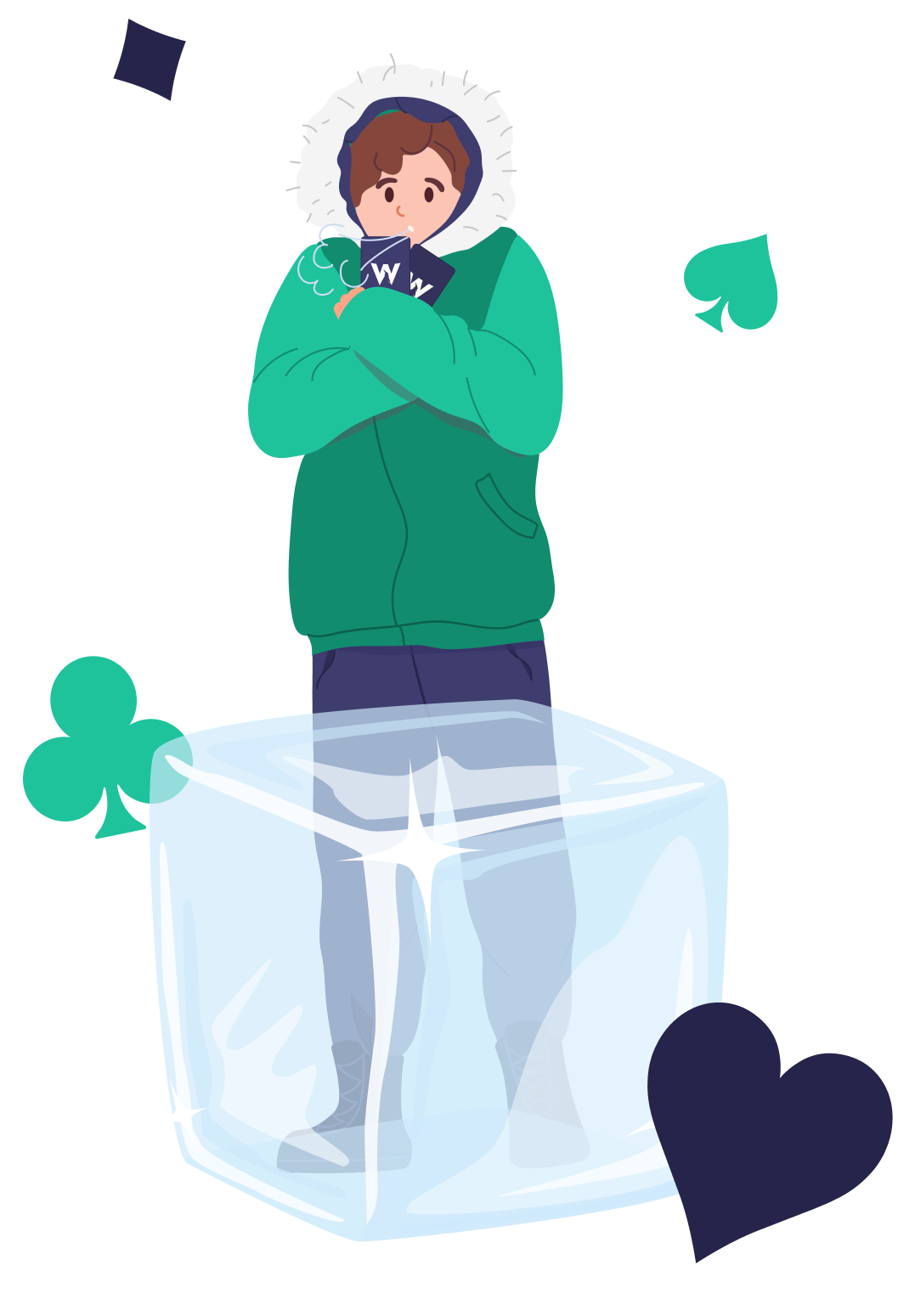
- Cold four-bet ranges are linear. Because cold-calling is such an unappealing option, cold-four-betting ranges consist only of the highest equity hands. A relatively small four-bet size is essential to accommodate thinner four-bets, the hands you might be tempted to call with, as these hands need to keep weaker hands in the three-better’s range to be profitable and benefit from cutting their losses should they wind up folding to a five-bet.
Raise Sizing
The other reason many human players four-bet less than optimally is due to a misunderstanding about how large to raise. Three-bet sizes tend to be in the neighborhood of three or four times the original raise, and so many players are tempted to apply that same template to four-betting. However, four-bet sizes, especially of the cold four-bets, can be much smaller than this. There are several reasons why:
- A small four-bet suffices to achieve a low SPR on the flop, even if the effective stack is 100bb. This means your strongest hands–your big pocket pairs–do not need large four-bets to grow the pot, as they will be able to stack off comfortably on most flops regardless.
- Any four-bet, no matter how small, leverages the remaining stacks to achieve disproportionate fold equity. A three-bettor facing a cold four-bet cannot make their calling decisions based on pot odds alone. They must also consider the risk of further betting after the flop, and with such a low SPR, they cannot set mine or chase other long shots. Even pairs like TT or JJ will not feel great stacking off on low boards because of the prevalence of bigger pairs in the four-better’s range.
- Fold equity from the original raiser subsidizes a cold four-bet. Even if your small four-bet does not elicit many folds from the three-better, you still benefit from fold equity by pushing the original raiser off the lion’s share of their opening range. The size of your four-bet is practically irrelevant for this purpose.
- Cold four-bet ranges are linear. Because cold-calling is such an unappealing option, cold-four-betting ranges consist only of the highest equity hands. A relatively small four-bet size is essential to accommodate thinner four-bets, the hands you might be tempted to call with, as these hands need to keep weaker hands in the three-better’s range to be profitable and benefit from cutting their losses should they wind up folding to a five-bet.
With 100bb stacks, GTO Wizard four-bets to 20bb over an 8bb three-bet when in position and to 21bb when out of position. It only gets smaller from there. With 40bb stacks, it four-bets to 12bb when in position against a 6.3bb three-bet or to 13bb when out of position.
It’s not that more fold equity wouldn’t be nice when four-betting in these spots; it’s more about these being the largest sizes that facilitate folding to a shove. If you were to put more than this in with your four-bets, you’d be pricing yourself in to call a shove and could no longer afford to four-bet thinner hands. If you had to commit 40bb to any hand you played in this spot, you’d have to play even fewer hands.
Some hands suffer more than others from offering these appealing calling odds, especially when out of position. Thus, it is not uncommon to see a split strategy with the middle of the four-betting range shoving while the strongest hands, which want to induce additional action, and the weakest, which want room to get away from a shove, make this small four-bet. For example, here is the SB’s response to a HJ open and CO three-bet with 40bb stacks:
Even at 100bb, there is a case for simply shoving some especially difficult-to-play hands rather than risking a call from the in position three-better:
This effect is even more pronounced in ICM models. With 25bb stacks and 25% of the field remaining, SB has a range for four-betting to 10bb and folding to a 25bb shove:
In a ChipEV model, the solver would never make this raise, as it would consider itself priced in to call a shove with any hand and so it would prefer simply to shove itself. In an ICM model, however, the chips remaining in a player’s stack are more valuable than those in the pot. So, when measured by the ICM cash value of the chips, the calling odds are not so appealing and SB does still have room to fold.
Although they will fold to a shove, these thinner raises are not bluffs. They are all hands that anticipate defensible equity in the more likely event that the three-better calls the four-bet. This is what it means to say the range is linear: given the likelihood of postflop play, you should cold four-bet only your best hands. It won’t matter what the bottom of that range is when your opponent shoves, as you’ll be folding it, but if your four-bet is called, you’ll be grateful to hold AQo rather than 72o.
Conclusion
Very few hands are strong enough to continue with a raise and re-raise in front of you. Even if you believe yourself to be in reasonable shape against the three-better, you still have the original (uncapped) raiser to worry about. So, you should fold almost everything, regardless of your position or stack size.
When you don’t fold, you should mostly four-bet. These four-bets can be quite small, especially when ICM is a significant factor. But if you are going to show the strength of continuing in the face of so much action, the last thing you want is to give your opponents a free or cheap shot at drawing out on your strong hand. And if you don’t have a strong hand, then it should already be in the muckMuck
To discard one’s cards without revealing them to the table, often done at showdown when a player has not won the hand. Less commonly, the term can also be used synonymously with the word fold..
Author
Andrew Brokos
Andrew Brokos has been a professional poker player, coach, and author for over 15 years. He co-hosts the Thinking Poker Podcast and is the author of the Play Optimal Poker books, among others.


